Die casting is a process by which solid metal parts and shapes, called die castings, are formed. Die casting takes place in facilities called foundries. In short, die casting works by applying high pressure and forcing molten material into dies, also called molds or die molds, then letting the metal cool. Secondary finishing processes sometimes follow this process to bring die castings up to the quality their intended applications. Read More…
Precision die castings plus a multitude of related services, including engineering, designing, machining, finishing and assembly, occur at A and B Die Casting. Specializing in low to medium volume solutions, we also offer competitive prices.
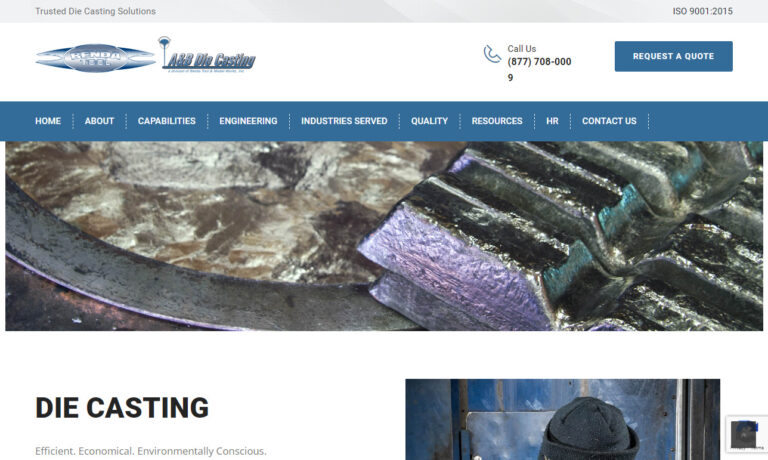
Carteret Die Casting has grown from a two man and two machine operation in a tiny 1000 square foot space, to a company that has over 20 state-of-the-art equipment.
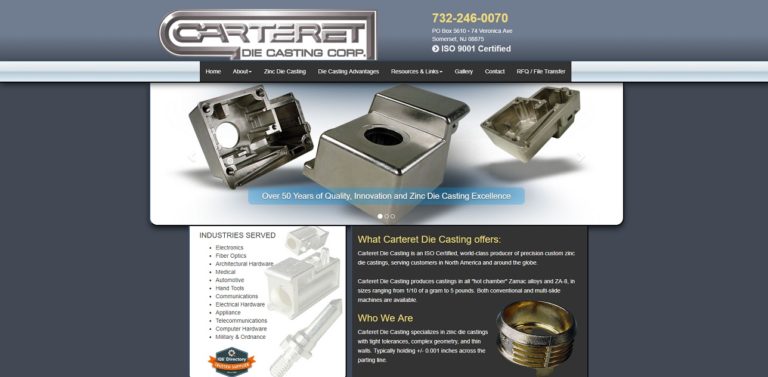
Precision Die Casting since 1950. Aluminum die casting and zinc die casting for aerospace, electronic, commercial industries. Turnkey operations from design or your blue print to assembly.
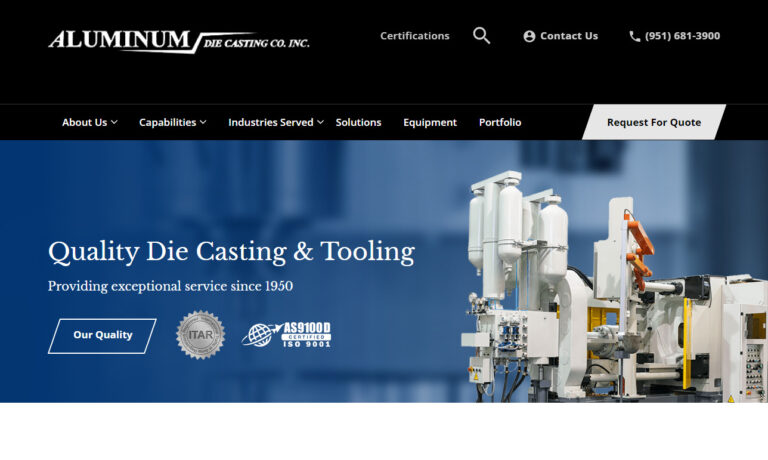
Modern Aluminum Castings offers customers full-service die castings and related capabilities from design to delivery. We work with a large variety of metal options, making us your one-stop source.
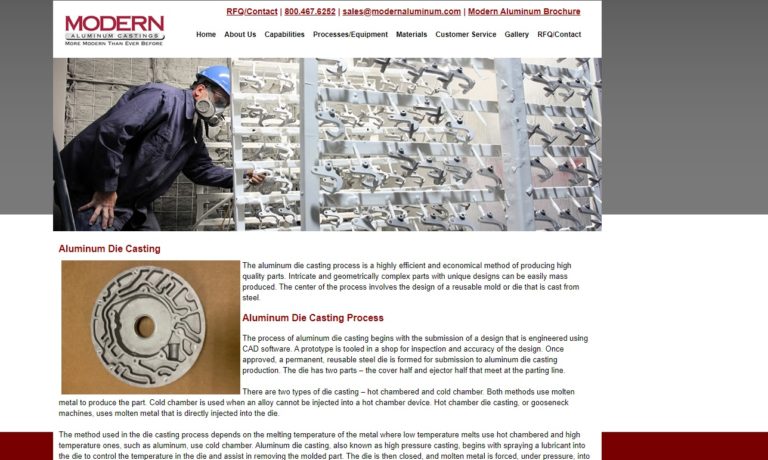
Carpenter Die Casting is more than just a die-casting manufacturer; we are your reliable partner in bringing your ideas to life. With decades of experience, a dedication to quality, and a proven track record, we stand ready to contribute our expertise to your next project. Discover the Carpenter Die Casting difference – where innovation meets tradition, and excellence is our standard.

More Die Castings Companies
Die Casting Applications
Die casting is employed to forge products, components, and structures for a broad spectrum of sectors. Clients appreciate the robustness, meticulous precision, and uniform excellence of die cast parts. This technique plays a pivotal role in several industries such as automotive production, electronics, architecture, construction, and more. It is also essential in creating EMI shielding, HVAC systems, fixtures, plumbing components, furniture, and various industrial manufacturing processes.
Die casting transforms metal into functional shapes through a precise, multi-step sequence. First, metals are melted down in a furnace. Next, this molten metal is injected into molds within a die casting machine. This process relies on several key components:
- A furnace for melting the metal,
- The metal that will be shaped,
- Molds or dies to form the metal,
- The die casting machine itself
This technique is favored because it consistently yields high-precision components that adhere to detailed specifications and maintain uniform quality. The same mold can generate thousands of identical castings, featuring the same design and detail, making it perfectly suited for large-scale production. It’s especially effective for non-ferrous alloys like zinc and aluminum.
Products Produced from Die Casting
Even though newer techniques like injection molding and vacuum forming have slightly reduced its popularity, die casting remains an essential process with countless products to its credit.
From sink faucets and gas pump handles to the playful charm of gumball machines, many products rely on the robust, seamless strength of die-cast metal. In the automotive world, engine blocks often boast die-cast aluminum valve covers. Additionally, a variety of other items—such as engine cooling fans, air conditioner components, air valves, and camera housings—further illustrate the widespread use of die casting in modern manufacturing.
In the realm of technology, high tolerance magnesium die castings form the protective shells and internal EMI enclosures for computer and electronic components. Meanwhile, miniature zinc die cast parts are integral to various electronic devices. Additionally, zinc die casting is commonly employed in the manufacturing of cabinetry and door handles.
History of Die Casting
The inception of the modern die casting process dates back to 1838, initially developed to revolutionize printing through the provision of movable type for printing presses. It wasn’t until 1949, however, that this technology was patented for a compact, handheld device aimed at automating the printing industry.
The real precursor to today’s die-casting machines emerged in 1885 with Otto Mergenthaler’s invention of the linotype machine, a groundbreaking device primarily used in newspaper production. The broader application of die casting didn’t take off until the 1890s when its potential extended beyond printing. During this era, manufacturers harnessed die press technology to churn out a myriad of high-quality products en masse, ranging from picture frames and phonographs to cash registers.
The evolution of die casting has been marked most significantly by the transformation in materials used throughout its history. Initially, the process primarily utilized lead and tin—metals known for their pliability but lacking in robustness. A pivotal shift occurred around 1914, when zinc and aluminum entered the scene, enhancing the strength of die-cast products. Within two decades, the repertoire of metals expanded further to include magnesium and copper. Today, the palette of non-ferrous metals available for die casting is virtually limitless.
Parallel to the diversification of metals, the techniques of die casting have also undergone significant refinement. Modern die casting machines operate at unprecedentedly high pressure levels, enabling the production of vast quantities of finished parts with remarkable efficiency.
Die Casting Materials Process
In die casting, a variety of non-ferrous metal castings are typically employed, including bronze, lead, tin, aluminum, zinc, magnesium, and copper. While alloys, particularly those of steel, can also be used, steel components are more commonly shaped through forging.
Bronze
Bronze, an ancient alloy primarily composed of copper with around 12% tin, comes in numerous varieties each possessing unique characteristics. Despite these variations, bronze is universally appreciated for its ductility, thermal and electrical conductivity, and visual appeal.
Lead
Lead, a dense and pliable element, has been mined and molded since ancient times in western Asia. With its low melting point, lead once enjoyed widespread use. However, its dark side as a potent neurotoxin—particularly harmful to children—has led to stringent regulations. It’s now prohibited in food-related applications and plumbing systems. Across most of Europe, lead-based paints are banned. Yet, despite its hazards, lead still plays a role in die casting, especially as an alloy component in brass or bronze to enhance machinability.
Tin
Tin, a pioneering metal in die casting, boasts exceptional density and precise dimensional fidelity. As a fundamental component of bronze, tin excels in alloy formation. However, its darker side emerges in some organotin compounds, which can unleash toxicity rivaling that of cyanide. This potential danger has prompted OSHA to establish strict workplace exposure limits for tin. Consequently, tin is also prohibited in food service applications. Despite these concerns, similar to lead, tin is prized as an alloy ingredient, primarily for its robust resistance to corrosion.
Aluminum
Aluminum casting involves filling molds with liquefied metal to create diverse shapes. This method benefits from aluminum’s inherent traits—it’s notably resistant to corrosion, exceptionally stable, and an excellent conductor of electricity. Moreover, aluminum’s low density simplifies the casting process, making it particularly advantageous for applications in the electrical industry. However, a limitation of aluminum die casting is its incompatibility with hot casting techniques.
Zinc
Zinc is a dense and malleable metal, known for its superb surface smoothness, robust impact resistance, and excellent castability. Yet, it has a tendency to corrode, often necessitating an extra layer of coating or plating. Typically, zinc is die-cast into delicate, ultra-thin components, such as miniature electronic parts.
Magnesium
Magnesium ranks as the ninth most plentiful element in the cosmos, distinguished by its remarkably low density and superior strength-to-weight ratio. This metal is exceptionally workable, maintaining its machinability after various casting and processing techniques. It can be molded in both hot and cold chambers. However, magnesium does have a drawback: it is prone to creep, commonly referred to as cold flow, which makes it generally less suitable for extremely high stress or high temperature conditions. In contrast, magnesium alloys show promising capabilities in such demanding environments.
Copper
Copper, a timeless natural element, boasts millennia of utilization. Its remarkable stability, strength, and durability are matched by its superior conductivity and resistance to corrosion and wear. However, its exceptionally high melting point presents a challenge, as it accelerates the wear and tear on the dies and casting chambers more swiftly than other metals.
Steel
Steel, a robust alloy predominantly composed of carbon and iron, serves as a cornerstone in diverse applications. Its strength and versatility make it indispensable in infrastructure projects, automotive production, defense initiatives, and marine manufacturing, as well as in the creation of various machines.
Die Casting Process Details
The die casting process is very short, lasting about a minute from the beginning to end, and is made up of six main stages as follows:
1. Clamping
In this phase, the two segments of the die are prepared by cleaning and lubricating them, ensuring the seamless removal of the mold later. These halves are then tightly secured to endure the intense pressure of molten metal injection, a process typically automated for efficiency and precision.
Closed die casting molds are crafted by dividing an original mold into two blocks. These are meticulously tooled and rejoined, aligning their cavities perfectly. A lubricant is sprayed on to regulate temperature and ease the ejection of parts. As the name implies, though these molds are capable of opening, they must be securely closed before initiating the die casting process.
2. Injection
Molten metal is first transferred into a shot sleeve and then, using high pressure, propelled by a plunger into the die for molding. Before this injection, the metal gathers in a chamber, primed for its journey. Depending on whether the machine is a hot or cold chamber type, the method of transferring the metal varies. This high-pressure, high-speed injection is crucial for achieving uniform solidification of the metal. The duration of the injection process depends on the specific characteristics of the metal used.
3. Cooling
As soon as the molten metal fills the mold cavity, it begins to cool and take shape. The mold must remain closed until the metal has fully cooled and solidified. Held firmly within the die, the metal cools into the specific shape intended. The time required for the metal to solidify depends on the type of metal used, the thickness of the casting, and the intricacy of the design.
4. Ejection
After a mold cast component solidifies, the pressure diminishes, leading to the separation of the die halves. Ejector pins then propel the newly formed metal object, known as a “shot,” from its mold. This occurs only after the specified cooling period has elapsed, ensuring the metal has set properly. The duration before the ejection is carefully calculated based on the metal’s characteristics and the dimensions of the casting chamber. During ejection, it’s crucial to avoid any part of the casting sticking to the die, ensuring the system is clear and ready for the subsequent cycle.
5. Trimming
After the shot is expelled from the die, it undergoes tooling and deburring to strip away surplus material. This extra material typically accumulates in the gaps between the die mold cavities and along the channels that lead to the mold, forming elements known as flash, sprue, runners, and gate.
As the material cools within the die, it hardens into the casting’s shape, accompanied by surplus material called flash. This excess is removed from the main casting through methods like sawing, cutting, or employing a trimming press. Depending on its condition, the scrapped material can either be recycled back into the die casting process or disposed of entirely.
Flash in die casting refers to the unwanted sliver of metal that spills beyond the mold’s parting line, obstructing the flow and proper filling of the mold with metal.
Sprue channels molten metal into runners, which are horizontal structures linked to the sprue, designed to guide the molten metal into the mold.
Finally, the term “gate” describes the path molten metal follows from the runners into the die cavity, as well as all the material expelled from a die.
6. Finishing/Secondary Processing
As previously mentioned, occasionally, the surplus material needs additional handling beyond simple tooling and deburring. It may be subjected to further secondary operations, including CNC machining, surface finishing, and plating. These processes serve multiple purposes, such as eliminating blisters and blowholes, enhancing surface strength, and boosting conductivity or compatibility.
How Die Cast Metal is Made
Die cast metals emerge from a process known as die casting. This involves injecting or pouring molten metal into molds crafted from steel, known as dies, which are custom-shaped for specific projects. This method ensures precise and consistent creation of each component. The technique primarily employs non-ferrous metals such as zinc, copper, aluminum, magnesium, lead, and pewter. The nature of the metal determines whether a hot or cold chamber is used in the casting process.
Smoothing and Polishing Process
Once a die cast metal part has cooled and been taken out of the mold, it requires polishing and smoothing before moving on to the next production phase. It still has excess components like sprues, runners, and flashes attached. These are typically removed manually and then returned to the furnace for melting and recycling. Any deformed parts are also sent back for reuse and remolding. After the excess components are removed, the part still has rough and sharp edges that need to be smoothed out. This polishing process is done using abrasive equipment. The choice of equipment varies based on the type of metal. Polishing wheels with varying levels of abrasiveness are employed for different metals. For high-volume polishing, particularly for models with small components, ball bearing abrasion machines are utilized to smooth out edges.
Die Casting Design
Before die casting your part, manufacturers evaluate several factors, including element thickness and intricacy, which determine the metal’s time in the mold, and the complexity of the cast design, which impacts solidification time. To tailor the die casting process to specific needs, manufacturers can modify the die design, adjust the process heat, alter the material composition, or vary the duration the material spends in the mold.
Machinery Used in Die Casting
Manufacturers can execute die casting by using either a hot chamber or a cold chamber machine, along with mold cavities.
Hot Chamber Machine
A hot chamber machine is employed for high-pressure die casting. Within this machine, molten metal is continuously injected at very high pressure, remaining integrated with the machine throughout the process.
Cold Chamber Machine
In a cold chamber machine, metal melted in a separate location is scooped and poured into the die cast machine.
Mold Cavity
The mold cavity is crafted from two solid dies. Each die is precisely cut from metal to achieve a specific shape, with most designed for creating closed die castings. Similar to an injection mold, the mold cavity mirrors the exact dimensions of the final part, accounting for factors such as machining, distortion, draft, and shrinkage.
All die casting machinery can be tailored to meet the specific requirements of the application.
Variations and Similar Processes of Die Casting
Variations on standard die casting encompass several techniques: vacuum pressure casting, low-pressure casting, semi-solid die casting, and squeeze die casting.
Vacuum Pressure Casting
In vacuum pressure die casting, the metal is positioned in a chamber above the mold. Vacuum pressure is then applied, driving the metal into the mold cavity, where it cools and solidifies. This method minimizes turbulence from the metal’s rapid movement and reduces the presence of gas inclusions.
Low-Pressure Casting
In low-pressure casting, molten metal sits in a chamber beneath the mold and is pressurized until it ascends through a tube into the mold cavity. This die casting technique is ideal for producing precise, symmetrical designs such as car wheel casings. It is especially popular for manufacturing aluminum components.
Semi-Solid Die Casting
The casting process begins by slicing a workpiece into several smaller pieces known as slugs. These slugs are melted down to a semi-liquid, slushy state before being injected into the mold cavity, where they cool and solidify. This technique, called semi-solid die casting or thixoforming, provides a high degree of precision and is commonly used with aluminum, aluminum alloys, or magnesium alloys.
Squeeze Die Casting
Squeeze die casting starts with pouring molten metal into an open die. As the metal settles, the die closes, forcing the metal into every corner of the mold. This method produces exceptionally dense parts. It’s commonly used for metals with low fluidity and high-viscosity aluminum or aluminum alloys.
Additional Types of Die Casting
There are two primary methods of casting, each chosen based on the properties of the metal and the intended function of the finished piece.
- Hot chamber machines are ideal for working with alloys that have low melting points and do not disintegrate under heat, such as zinc.
- Cold chamber machines are utilized for alloys that require high melting temperatures, like aluminum alloys.
In both methods, a lubricant is applied to the mold for easy removal. Initially, the mold is filled within the casting chamber of the die casting machine, where a piston exerts pressure. The key differences between the two casting types stem from the structure of the casting chamber.
In a hot chamber casting machine, the casting chamber remains in constant contact with the molten alloy. The alloy is forced through a valve into a cast, where a piston applies high-speed pressure into the die casting mold. Conversely, in a cold chamber die casting machine, the casting set is positioned outside the molten alloy. To produce a component, the mold is pushed to the casting chamber, and pressure is exerted into the die casting mold, similar to the process in the hot chamber casting machine.
Properties of Aluminum Sand Casting
Aluminum sand casting involves shaping aluminum by pouring it into molds made of sand.
Process
Preparing the Mold for Casting:
The process kicks off with crafting the mold, consisting of two parts: the cope on top and the drag on the bottom. This mold pattern mirrors the shape of the final object. Once the mold is ready, it’s lubricated to ensure the casting can be easily removed.
Manufacturers have two primary methods for casting: green sand casting and air-set casting. In green sand casting, wet sand combined with organic clays serves as the binder. Before the mold sets, the sand has a green appearance. For aluminum sand casting, olivine sand is preferred, as silica is not ideal for the green sand method.
The air set method involves using sand mixed with binders and quick-setting adhesives. Manufacturers often choose between natural bank sand or synthetic sand for this technique. The sand is packed into the mold cavity, creating a plug for pouring molten metal. Once in place, the sand is compacted and given time to settle and solidify.
Applying the Metal to the Mold:
The next step involves pouring the molten metal or aluminum into the cavity via the gating system. The mold halves are securely clamped together with jackets, allowing the metal to sit, cool, and start to solidify. Once cooled, the sand mold is broken apart to extract the cast. Manufacturers sometimes use vibrating machines to shake off the sand from the cast.
Finishing & Final Steps:
The surplus metal is either manually trimmed or cut using a trimming tool, then recycled back into the sand-casting process. The final product is polished or powder-coated to achieve a shiny, smooth finish.
Binders
Binders are chemical compounds that enhance the strength of cores and molds in aluminum sand casting. Various binder options are available for this process. These are:
Clay and water – Bentonite clay is the go-to material for sand casting, but kaolinite clay is also widely used in the industry.
Resins – Resins can be either synthetic or natural, and some manufacturers explore the use of additives combined with resin to influence the final casting results.
Water Glass – Sodium silicate, commonly known as water glass, is a quick-drying and durable binder that can be used at room temperature. It pairs effectively with silica sand.
Additives and Parting Compounds
Additives are incorporated into the mold to improve its characteristics. Coal powder and fuel oil additives stop the liquid metal from adhering to the sand particles. Additional parting compounds, such as dry silica, talc, and graphite, aid in separating the replicated parts from their molds.
Applications of Aluminum Sand Casting
Aluminum sand casting is employed to manufacture components such as air compressor pistons, bearings, blowers, bushings, cams, electronic equipment, and engine crankcases. This method is also utilized to produce engine oil pans, fittings, low-pressure valves, and various other machine parts.
Die Casting Benefits
Why invest in die castings? The process is both cost-effective and adaptable, offering a high-volume, low-cost solution for producing metal shapes, products, and parts with precise tolerances and intricate designs. Unlike other methods, the complexity of die castings doesn’t hinder their production. Instead, die castings, particularly those made from zinc and aluminum, can be produced in large quantities at a low cost without sacrificing quality.
Die castings require fewer secondary processes and less handling compared to methods like metal stamping, hand tooling, or forging. Their versatility is evident in the casting options available; they can be produced using either hot chamber or cold chamber casting and can take on nearly any shape. Renowned for their durability and strength, die castings are highly favored worldwide. By designing your die molds meticulously, selecting the right materials, and ensuring your equipment is correctly installed and maintained, your investment will yield significant rewards.
Die casting stands out among manufacturing processes due to its numerous benefits. This method efficiently and cost-effectively produces components in a wide variety of shapes. The resulting products are notable for their durability and aesthetic appeal, providing manufacturers with reliable and customizable solutions. Die casting allows for high-speed production while maintaining intricate designs and tight tolerances. Moreover, components produced through this process often require no post-production processing, as they emerge fully formed without the need for additional tooling or shaping. These final products are also capable of withstanding significant heat and tension variations, making them ideal for use in various appliances.
How to Find the Right Die Casting Manufacturer
The key to an exceptional experience lies not merely with any manufacturer, but with the right one. To pinpoint this, you must first identify promising options. To assist you in this endeavor, we have curated a list of trusted die casting companies. On this page, you’ll find their contact details and detailed profiles. Take the time to evaluate their offerings thoroughly. Compare their products and services against your requirements, and select three or four companies that seem best suited to meet your needs. Initiate discussions with each, outlining your specifications, budget, timeline, delivery preferences, and quality standards. Ensure they can accommodate all your criteria before finalizing any agreements. Once you’ve engaged with each, compare your interactions and choose the manufacturer that aligns best with your expectations to start your project.
Check out our Forgings website

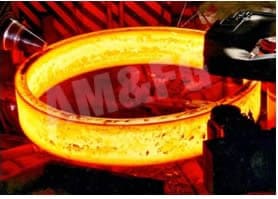
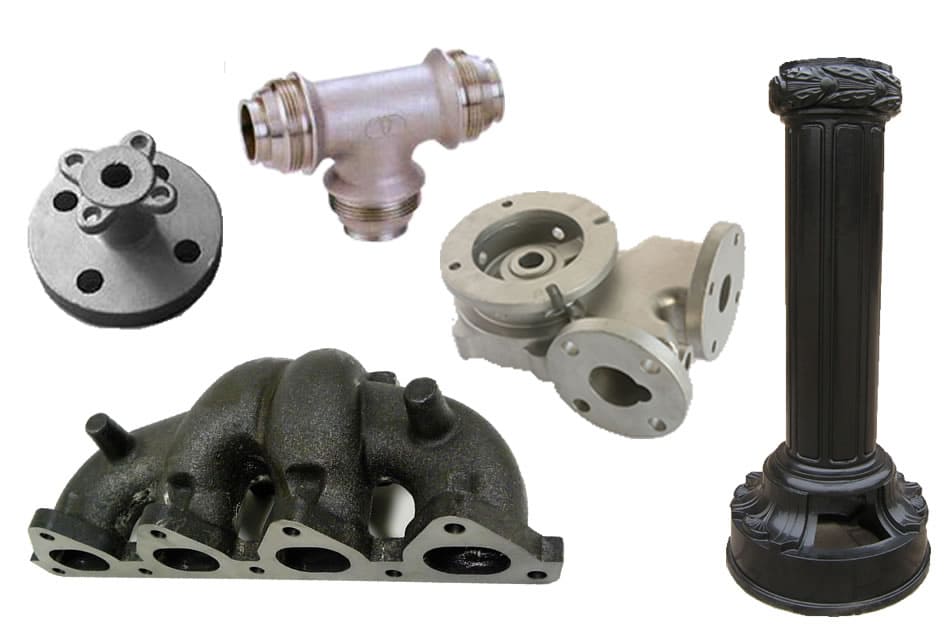
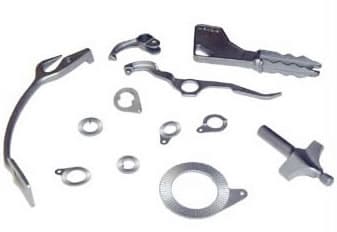
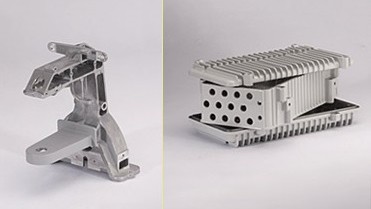

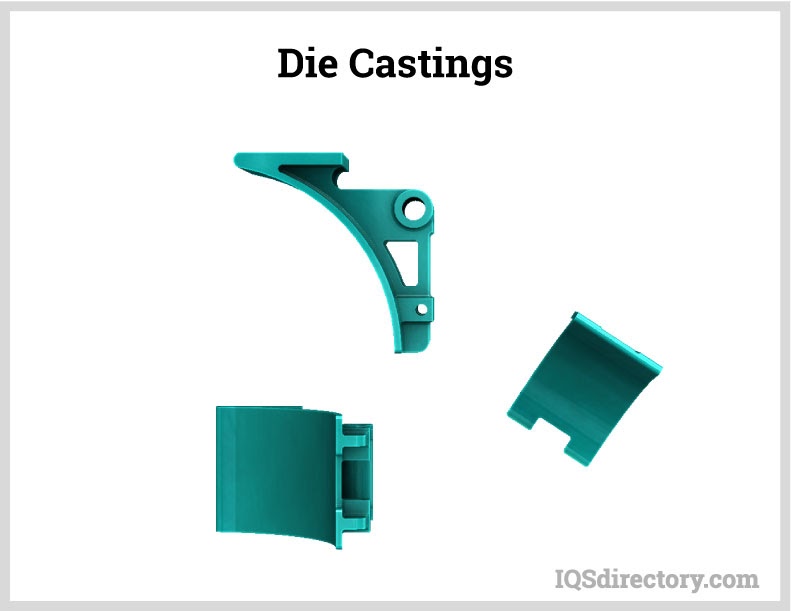
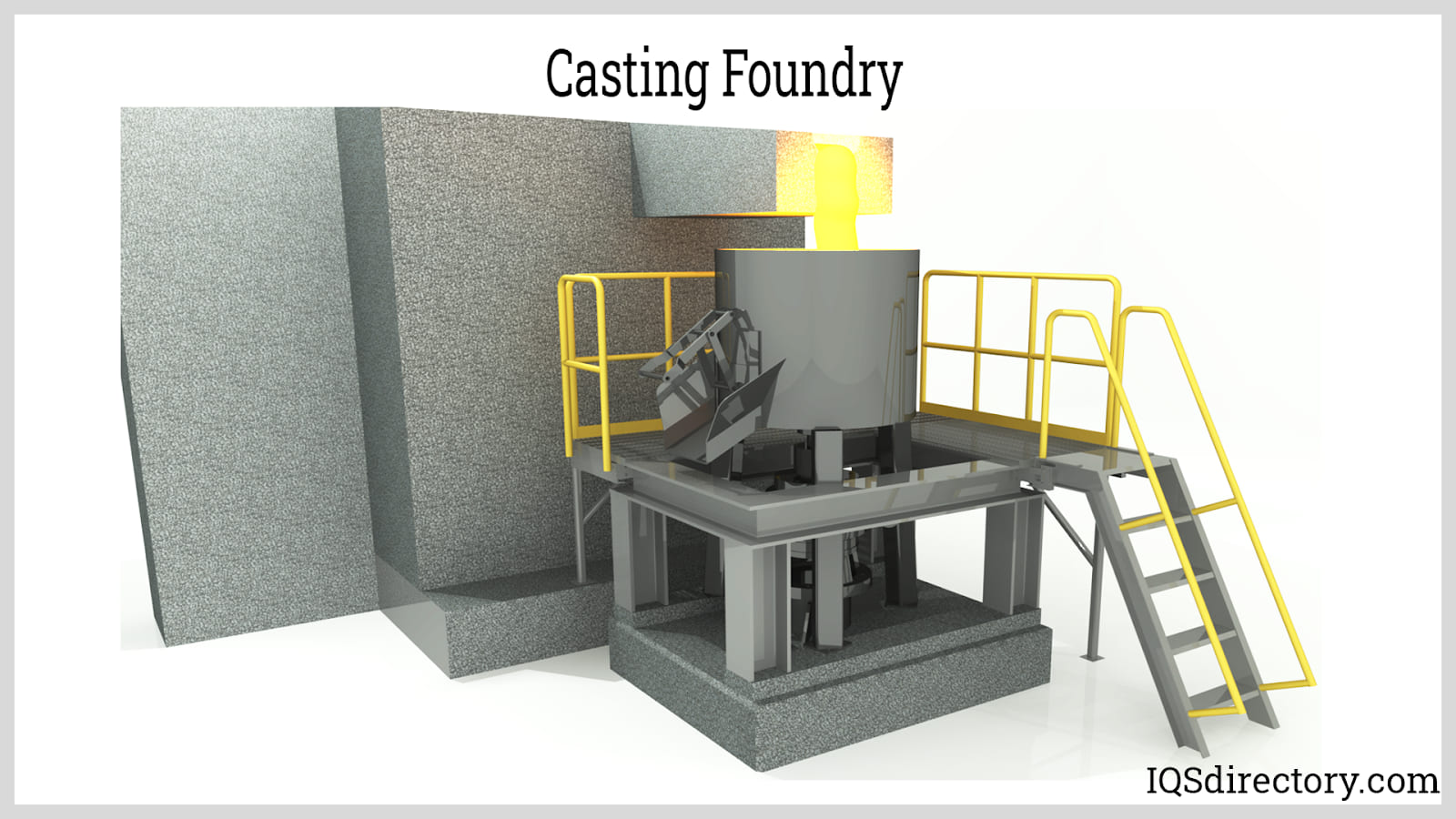
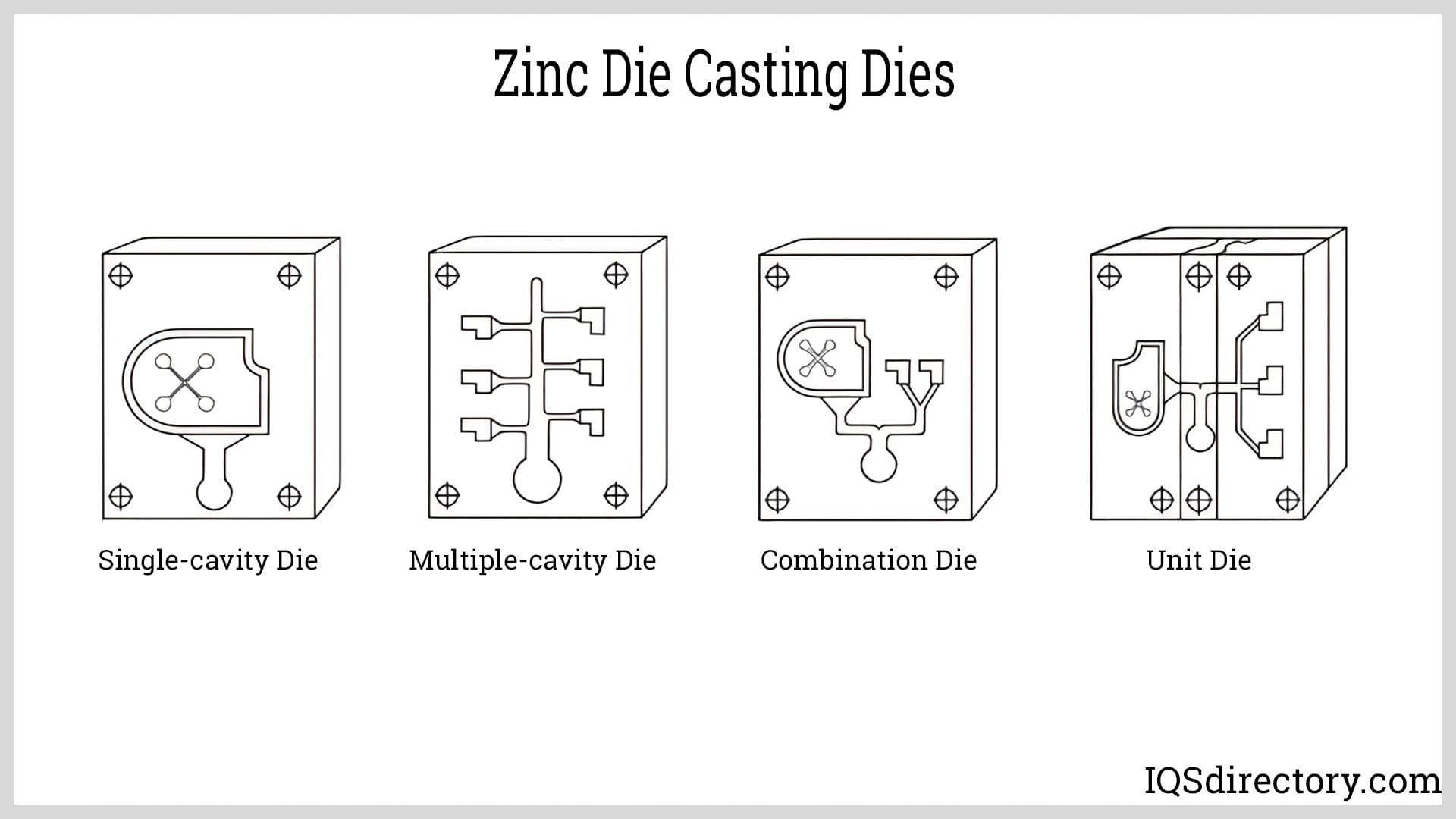
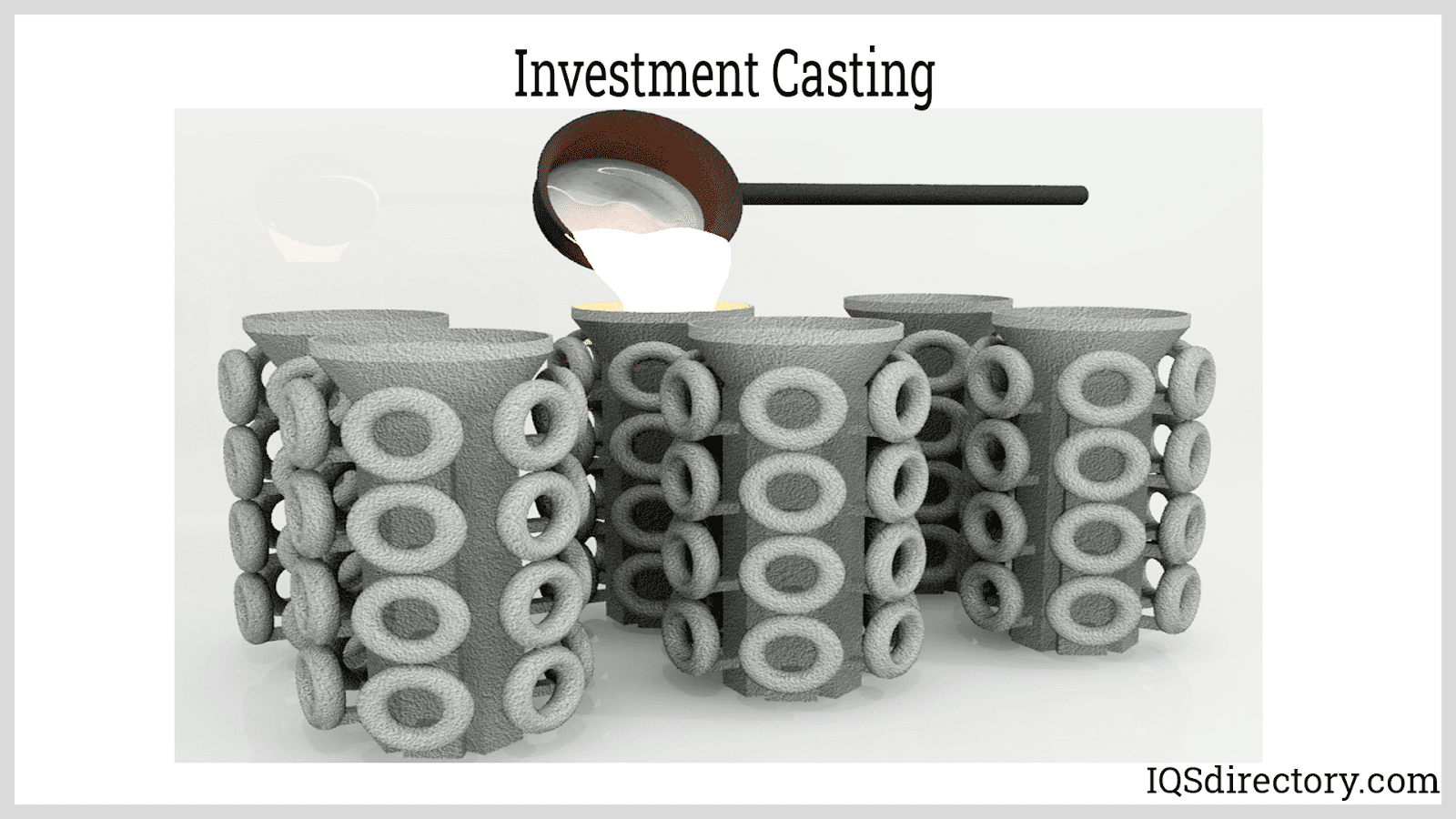
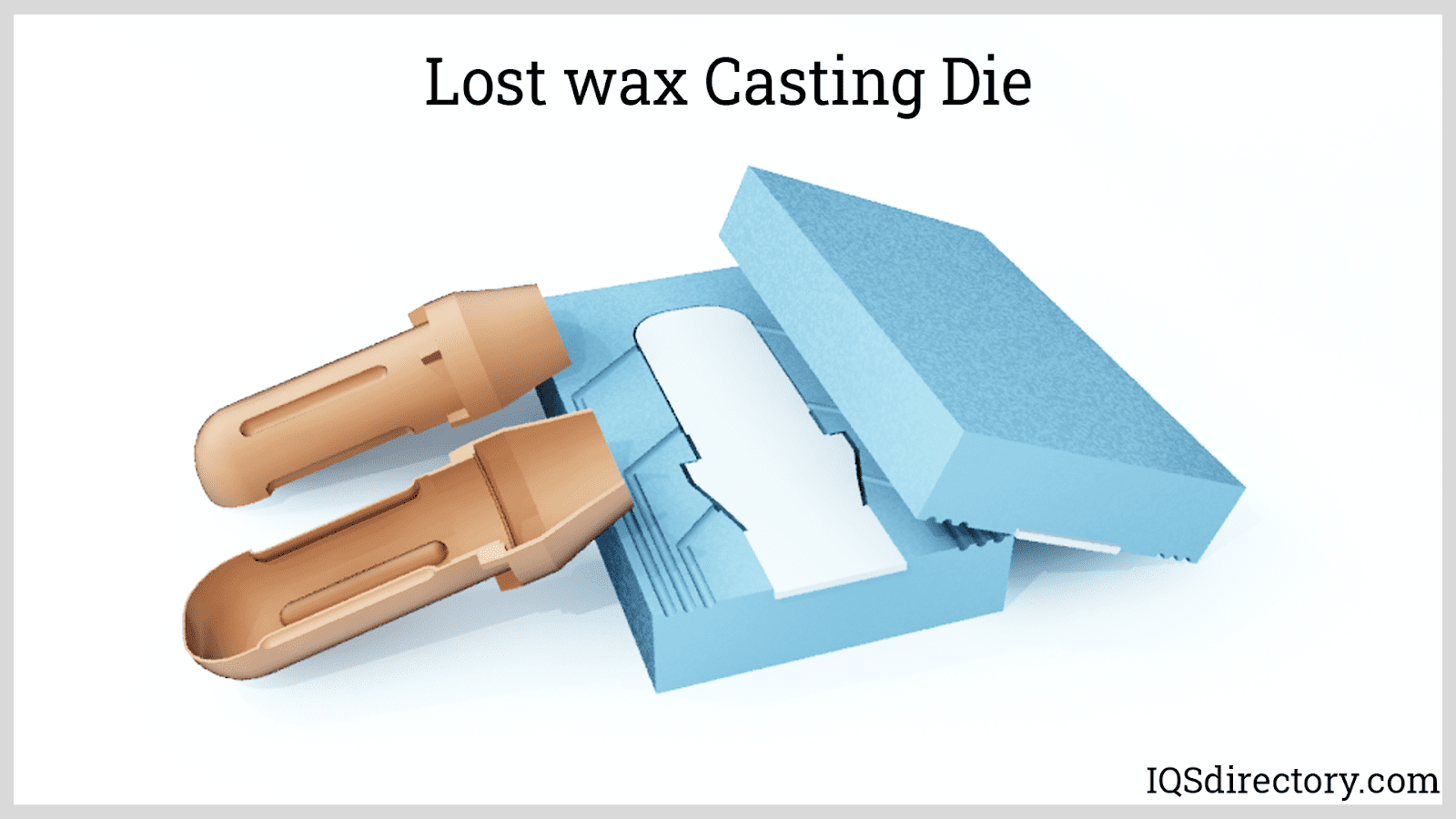
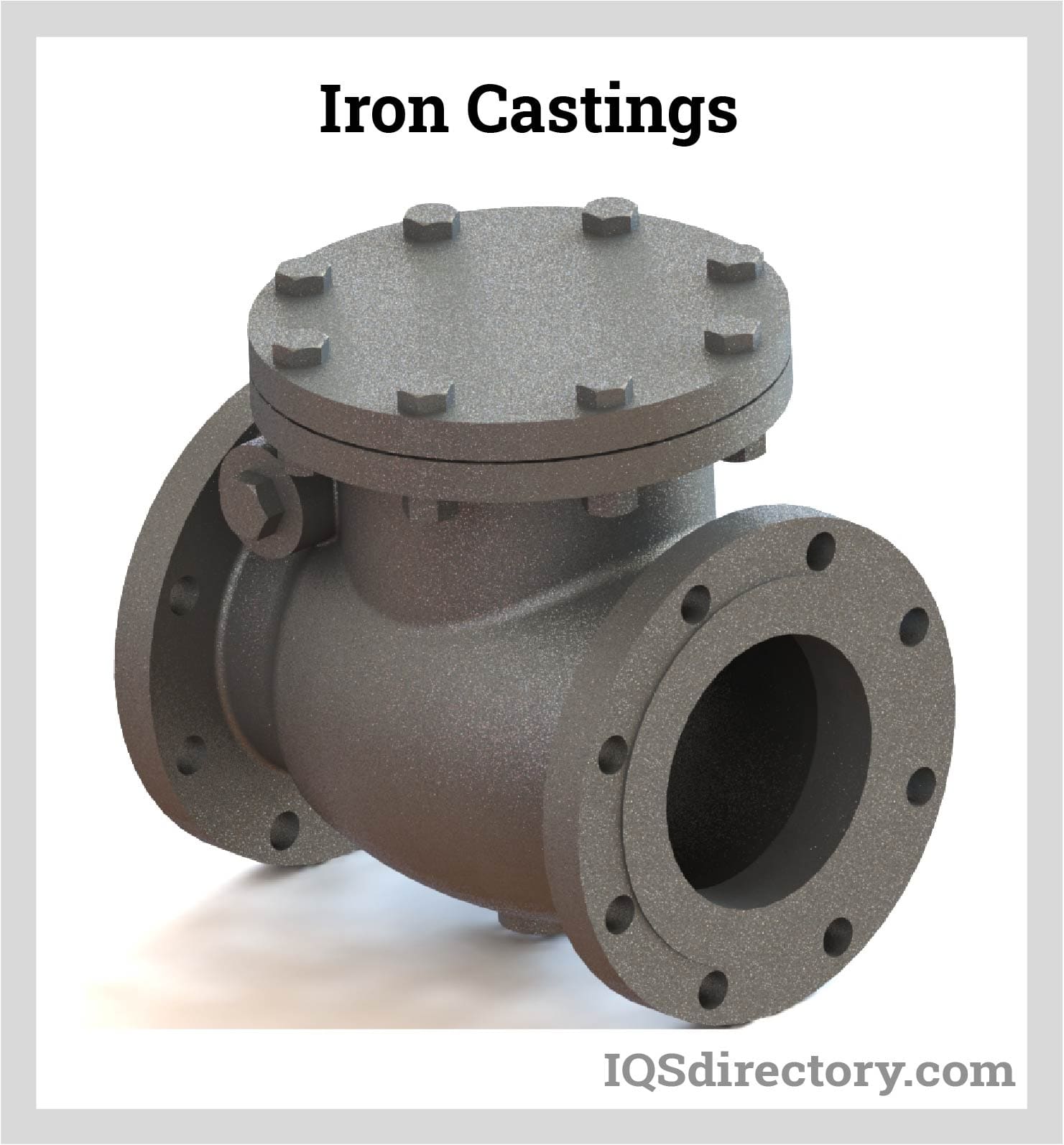
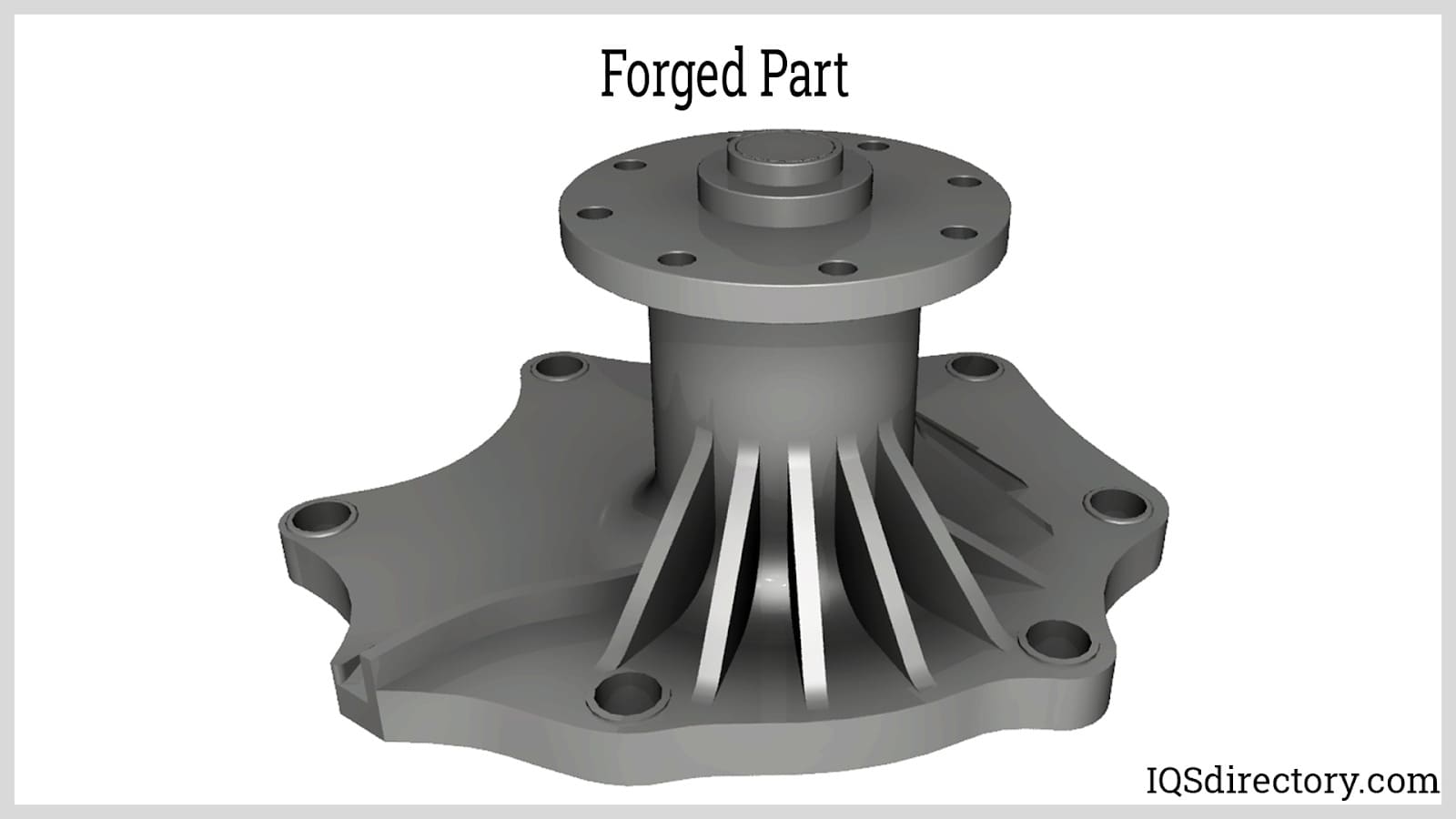
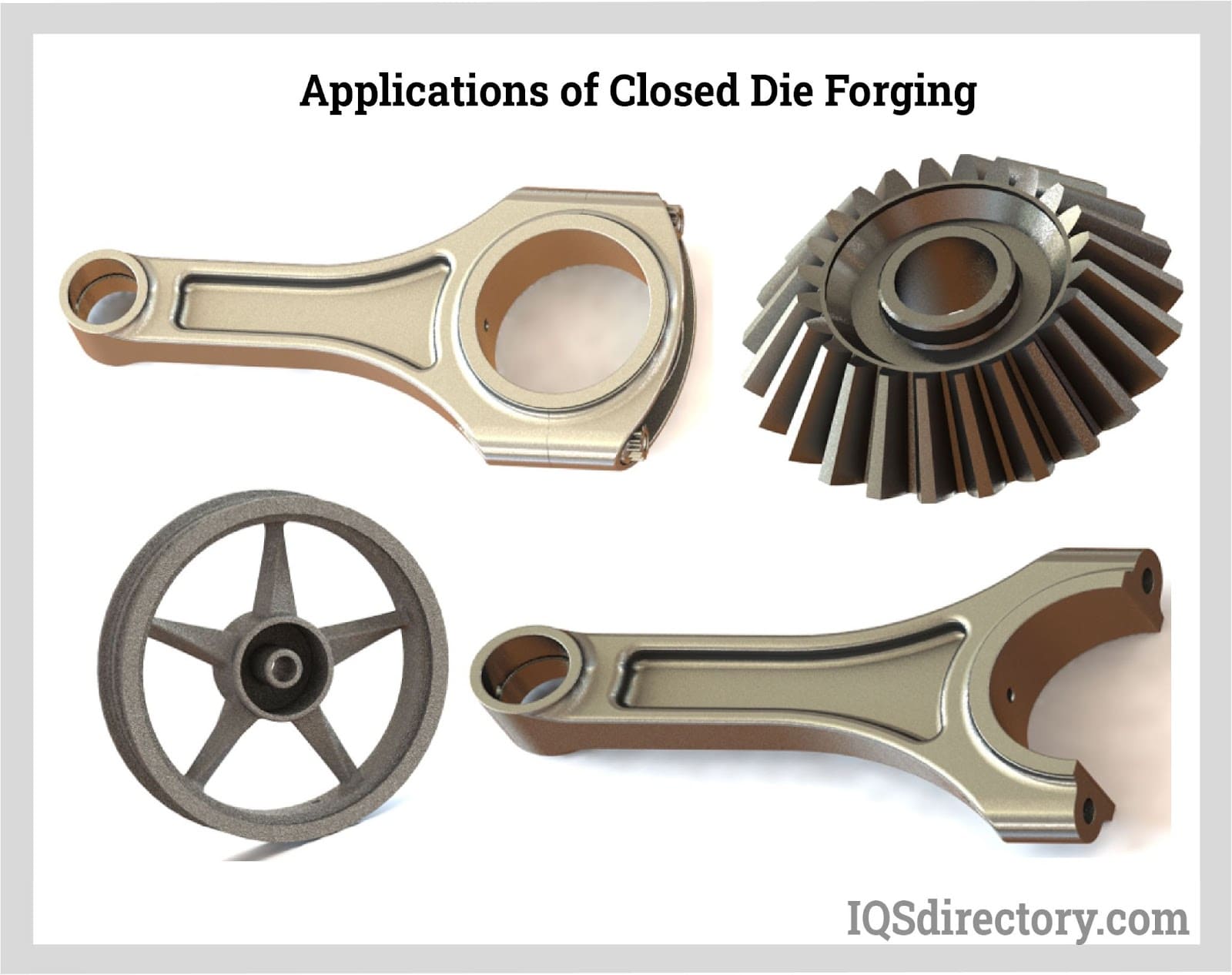
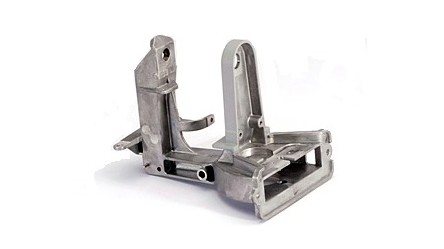 Die Castings
Die Castings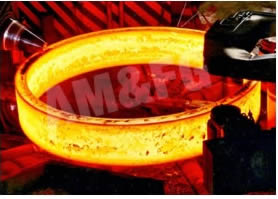 Forgings
Forgings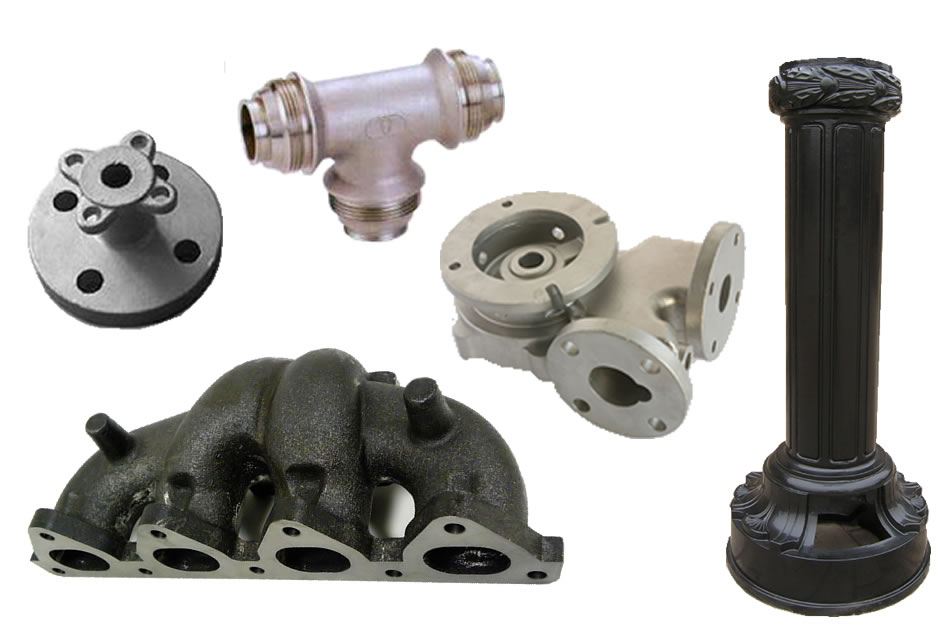 Grey Iron Castings
Grey Iron Castings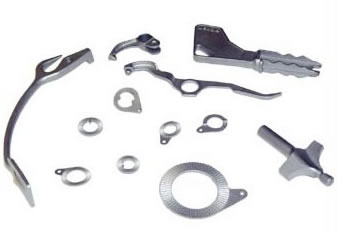 Investment Castings
Investment Castings Castings & Forgings
Castings & Forgings Bulk Material Handling
Bulk Material Handling Electrical & Electronic Components
Electrical & Electronic Components Flow Instrumentation
Flow Instrumentation Hardware
Hardware Material Handling Equipment
Material Handling Equipment Metal Cutting Services
Metal Cutting Services Metal Forming Services
Metal Forming Services Metal Suppliers
Metal Suppliers Motion Control Products
Motion Control Products Plant & Facility Equipment
Plant & Facility Equipment Plant & Facility Supplies
Plant & Facility Supplies Plastic Molding Processes
Plastic Molding Processes Pumps & Valves
Pumps & Valves Recycling Equipment
Recycling Equipment Rubber Products & Services
Rubber Products & Services